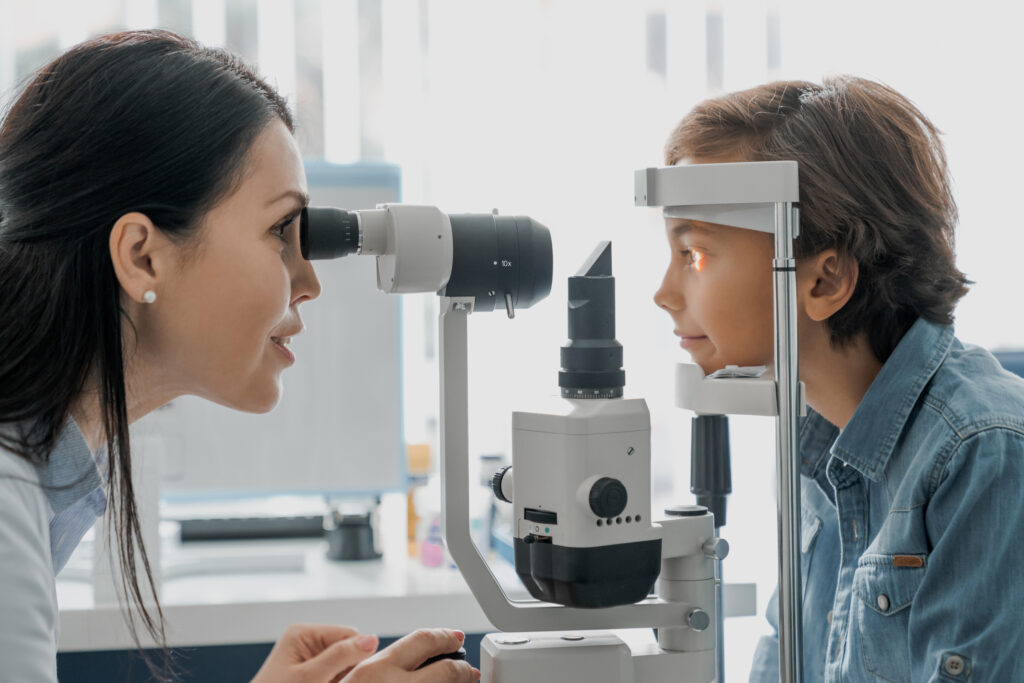Genetic eye disorders are conditions caused by inherited mutations in genes that affect vision and eye health. These disorders can range from mild impairments to severe vision loss, and they may appear at birth or develop over time. Understanding the types of genetic eye disorders that can affect children is essential for parents so they can recognize early signs and seek appropriate care.
Common Types of Genetic Eye Disorders
1. Retinitis Pigmentosa (RP)
Retinitis Pigmentosa (RP) is one of the most common inherited eye disorders that affects the retina, the light-sensitive tissue at the back of the eye. Over time, RP causes the retina to gradually lose its ability to process light, leading to progressive vision loss. Symptoms typically begin with night blindness and tunnel vision, eventually resulting in complete blindness. RP is usually diagnosed in childhood or adolescence and can be inherited in several different patterns, including autosomal dominant, autosomal recessive, or X-linked.
2. Leber Congenital Amaurosis (LCA)
Leber Congenital Amaurosis (LCA) is a severe form of genetic retinal degeneration that typically appears in infancy. Children with LCA are often born with very poor vision or blindness. This condition is caused by mutations in various genes that are critical for the development and function of the retina. In addition to vision problems, children with LCA may show other signs like involuntary eye movements (nystagmus) or extreme sensitivity to light (photophobia).
3. Stargardt Disease
Stargardt Disease, also known as juvenile macular degeneration, is an inherited disorder that affects the macula, the central part of the retina responsible for detailed vision. Children with Stargardt disease may experience blurred vision, difficulty reading, and difficulty recognizing faces. The condition typically starts in late childhood or adolescence, with vision loss progressively worsening over time. Stargardt disease is usually inherited in an autosomal recessive manner, meaning both parents must carry a copy of the mutated gene.
4. Congenital Cataracts
Congenital cataracts are clouding of the eye’s lens that is present at birth or develops shortly after. These cataracts can be caused by genetic mutations or other underlying conditions, and if left untreated, they can lead to permanent vision impairment. Early detection and surgical intervention are key to preventing long-term vision problems in children with congenital cataracts.
5. Aniridia
Aniridia is a rare genetic eye disorder in which the iris (the colored part of the eye) is either partially or completely absent. This condition can cause a variety of vision issues, including sensitivity to light, blurred vision, and an increased risk of other eye conditions such as glaucoma or cataracts. Aniridia is typically inherited in an autosomal dominant pattern, meaning a child only needs one copy of the mutated gene to be affected.
6. Ocular Albinism
Ocular albinism is a genetic condition that affects the pigmentation of the eyes, often resulting in reduced vision, light sensitivity, and involuntary eye movements. Unlike oculocutaneous albinism, which also affects the skin and hair, ocular albinism primarily impacts the eyes. It is typically inherited in an X-linked pattern, affecting males more frequently than females.
Diagnosing Genetic Eye Disorders
Diagnosis of genetic eye disorders often begins with a thorough eye exam by a pediatric ophthalmologist. If a genetic condition is suspected, genetic testing may be recommended to confirm the diagnosis and identify the specific mutation. Other diagnostic tools, such as retinal imaging, visual field tests, and electroretinography (ERG), may be used to assess the extent of the vision impairment.
Early diagnosis is crucial in managing genetic eye disorders, as it allows for timely interventions such as low vision aids, surgery, or other treatments that can help maximize a child’s vision and quality of life.
How Family Health Checker app Can Help
For parents concerned about developmental and genetic concerns, FDNA’s Family Health Checker app provides a convenient way to assess your child’s development at home. Powered by advanced and secure AI, the app evaluates your child’s progress across key developmental areas and helps address potential health concerns. Many developmental delays may be linked to genetic factors and early diagnosis and intervention are essential. After completing the assessment, which includes advanced facial analysis, parents receive a free evaluation report that outlines their child’s developmental status, including any potential red flags. This free report can serve as a helpful resource for discussions with healthcare professionals and guiding decisions regarding further evaluation and a no-cost genetic test for eligible children. While AI tools can streamline and expedite the diagnostic process, consulting a healthcare professional for a formal diagnosis and tailored guidance is essential.



